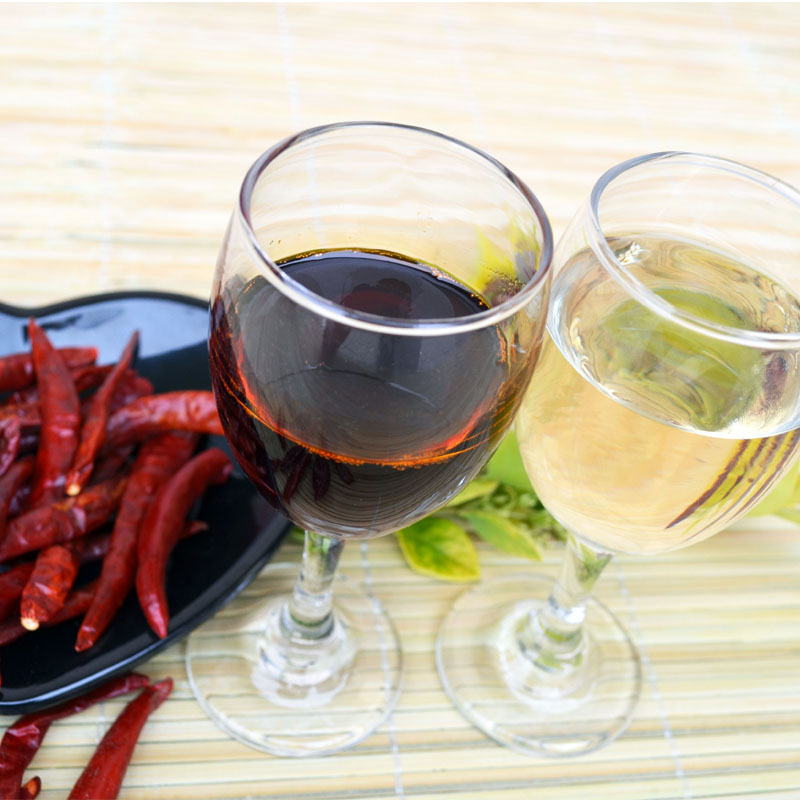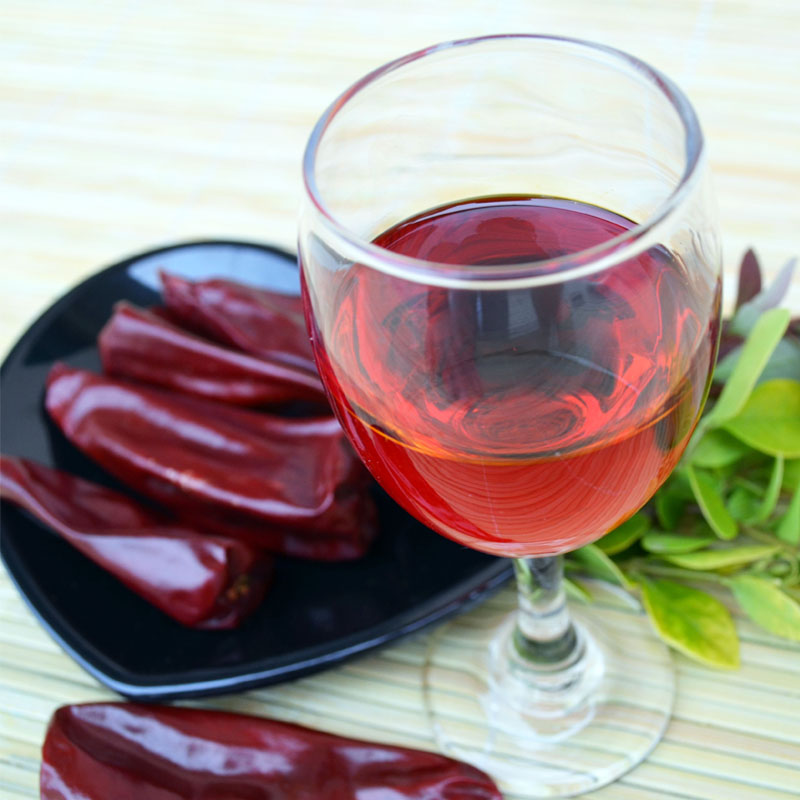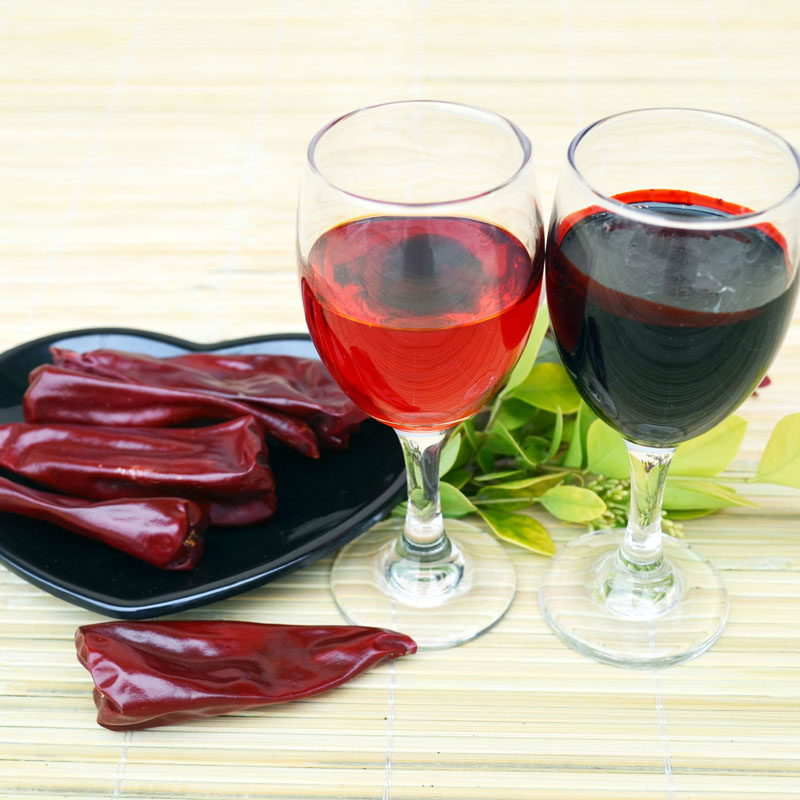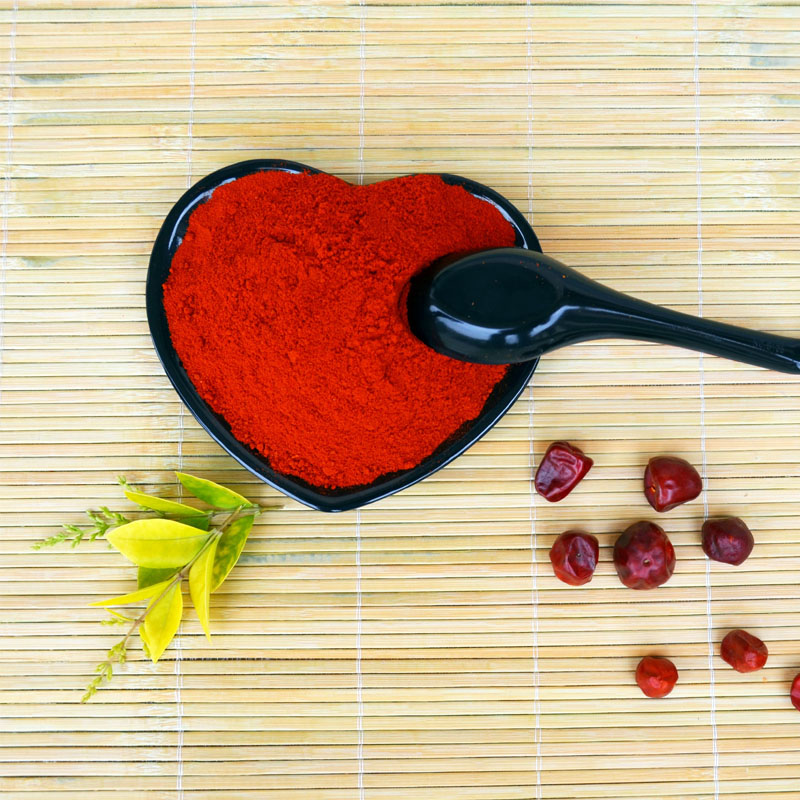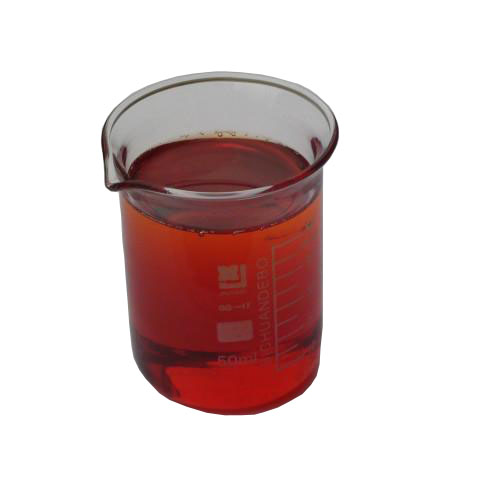

Because of the burning sensation caused by capsaicin when it comes in contact with mucous membranes, it is commonly used in food products to provide added spiciness or "heat" (piquancy), usually in the form of spices such as chili powder and paprika. In high concentrations, capsaicin will also cause a burning effect on other sensitive areas, such as skin or eyes. The degree of heat found within a food is often measured on the Scoville scale.
There has long been a demand for capsaicin-spiced products like chili pepper, and hot sauces such as Tabasco sauce and Mexican salsa. It is common for people to experience pleasurable and even euphoric effects from ingesting capsaicin. Folklore among self-described "chiliheads" attribute this to pain-stimulated release of endorphins, a different mechanism from the local receptor overload that makes capsaicin effective as a topical analgesic.
Oleoresin capsicum wa pẹlu afikun ZERO ti wa ni tita to gbona si Yuroopu, South Korea, Malaysia, Russia, ati bẹbẹ lọ ISO, HACCP, HALAL ati awọn iwe-ẹri KOSHER wa.

